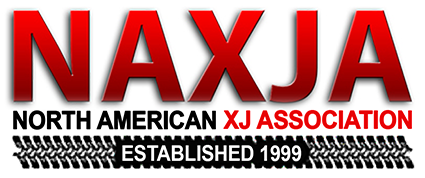The JJs cannot relieve the axle bind in any way. The only bind they relieve is the amount the radius arm can swing away from ride height. The stock setup has no bind as the radius arm tries to twist, so there's no gain in going to a JJ in that regard. Ford guys have used JJs in the past - this is nothing new. In fact, there are several other methods for alleviating the bind at the frame end other than JJs that have several more desirable traits (less prone to failure, less maintenance required, much lower cost). High misalignment heims and multi-axis hinge setups come to mind.
Unfortunately, the axle bind is still there. This is not the bind you see at the frame end for the change in angle of the axle relative to the frame, this is the bind seen only at the axle end for the change in position from one end of the axle to the other. To help illustrate this difference, I'll see if I can dig up some pictures.
I do have a quick experiment that may help, though. Take a cardboard tube from a roll of paper towels. Hold it in front of you with both arms fully outstretched and with one hand at each end. Now pull one arm down a little, sorta like an axle articulating. Make sure your arms and wrists are locked. I guarantee one of three things will happen: 1) your grip on the tube will be loose enough that one end will spin underneath your hand, 2) your grip will by tight enough and the cardboard itself will deform, or 3) you will let your wrist rotate a little bit to compensate without realizing it. This twisting effect along the length of the cardboard tube (and, more specifically, the cardboard's resistance to twist) is the bind of which I speak.




 . Cresso has it right that the joint at the cross member doesn't relieve the bind at the axle. With the longer radius arms the & ford "C" bushings the bind is a non issue. In fact I went from stock rubber bushings to poly to stiffen the front end some because the front was to loose. This helped balace the front suspension with the rear so they work together rather than the rear having all control over the rig & body position. Here's the link & some pics. After the article was written I redid the mounts at the cross member so they sit flush. The steering is also different. The front shocks are 9012 ranchos that yeild close to 14" of travel. I use all of it.
. Cresso has it right that the joint at the cross member doesn't relieve the bind at the axle. With the longer radius arms the & ford "C" bushings the bind is a non issue. In fact I went from stock rubber bushings to poly to stiffen the front end some because the front was to loose. This helped balace the front suspension with the rear so they work together rather than the rear having all control over the rig & body position. Here's the link & some pics. After the article was written I redid the mounts at the cross member so they sit flush. The steering is also different. The front shocks are 9012 ranchos that yeild close to 14" of travel. I use all of it.
